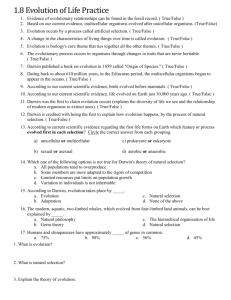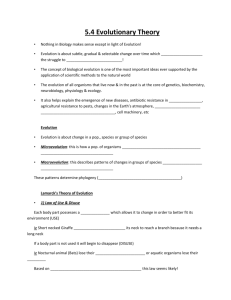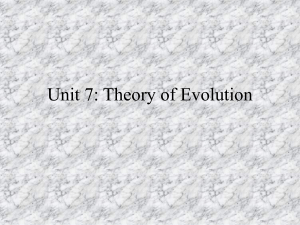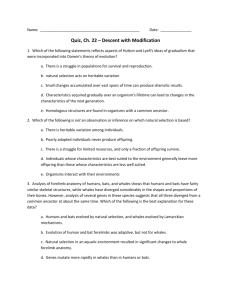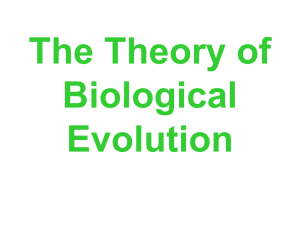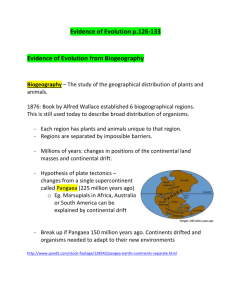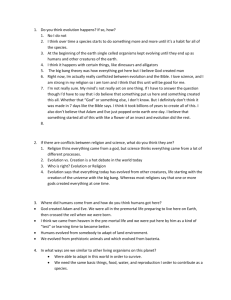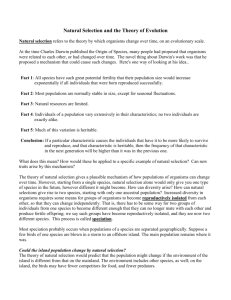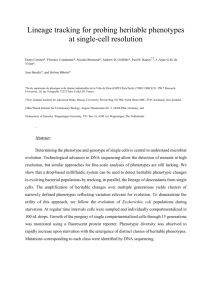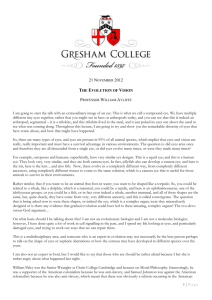Pope Benedict XVI said the debate raging in some countries
advertisement
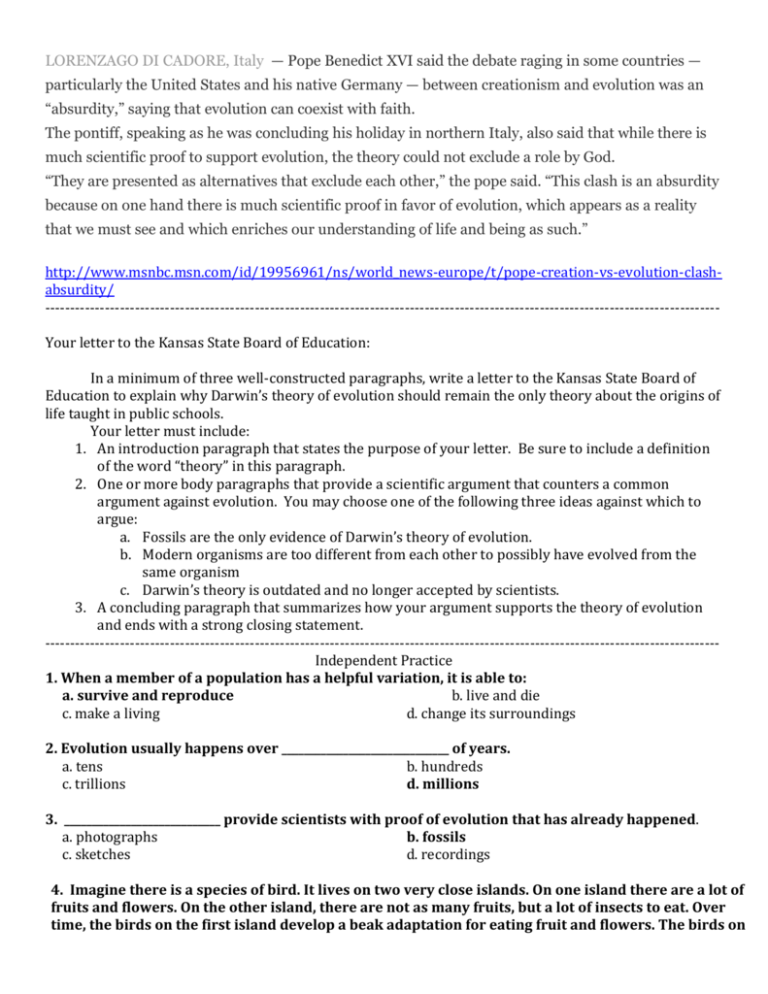
LORENZAGO DI CADORE, Italy — Pope Benedict XVI said the debate raging in some countries — particularly the United States and his native Germany — between creationism and evolution was an “absurdity,” saying that evolution can coexist with faith. The pontiff, speaking as he was concluding his holiday in northern Italy, also said that while there is much scientific proof to support evolution, the theory could not exclude a role by God. “They are presented as alternatives that exclude each other,” the pope said. “This clash is an absurdity because on one hand there is much scientific proof in favor of evolution, which appears as a reality that we must see and which enriches our understanding of life and being as such.” http://www.msnbc.msn.com/id/19956961/ns/world_news-europe/t/pope-creation-vs-evolution-clashabsurdity/ --------------------------------------------------------------------------------------------------------------------------------------Your letter to the Kansas State Board of Education: In a minimum of three well-constructed paragraphs, write a letter to the Kansas State Board of Education to explain why Darwin’s theory of evolution should remain the only theory about the origins of life taught in public schools. Your letter must include: 1. An introduction paragraph that states the purpose of your letter. Be sure to include a definition of the word “theory” in this paragraph. 2. One or more body paragraphs that provide a scientific argument that counters a common argument against evolution. You may choose one of the following three ideas against which to argue: a. Fossils are the only evidence of Darwin’s theory of evolution. b. Modern organisms are too different from each other to possibly have evolved from the same organism c. Darwin’s theory is outdated and no longer accepted by scientists. 3. A concluding paragraph that summarizes how your argument supports the theory of evolution and ends with a strong closing statement. --------------------------------------------------------------------------------------------------------------------------------------Independent Practice 1. When a member of a population has a helpful variation, it is able to: a. survive and reproduce b. live and die c. make a living d. change its surroundings 2. Evolution usually happens over ______________________________ of years. a. tens b. hundreds c. trillions d. millions 3. ____________________________ provide scientists with proof of evolution that has already happened. a. photographs b. fossils c. sketches d. recordings 4. Imagine there is a species of bird. It lives on two very close islands. On one island there are a lot of fruits and flowers. On the other island, there are not as many fruits, but a lot of insects to eat. Over time, the birds on the first island develop a beak adaptation for eating fruit and flowers. The birds on the second island develop adaptations for eating insects. Over millions of years the two populations of birds have evolved into different ____________. a. people b. life c. species d. individuals 5. What is the name of the scientist that concluded that this happened to the finches on the Galapagos Islands? a. Carl Sagan b. Bill Nye c. Mr. Beckerman d. Charles Darwin 6. Below are all four parts of Darwin’s theory of evolution. For each, define what it is and explain why it is necessary for explaining the theory of evolution. a. Heritable variation Heritable means that something can be passed down to one’s offspring (this happens through DNA). Variations are differences. Heritable variations are differences between individuals that can be passed to that individual’s offspring. If everyone was exactly the same, either everyone would live or everyone would die. There has to be heritable variation for a species to change over time. b. Competition Competition occurs when there is not enough food, water, places to live, etc. Without competition, even the most poorly-adapted organisms would be able to live and reproduce. It is only with competition that the best-adapted organisms will live and pass on the adaptations that helped them to their offspring. c. Natural selection Natural selection is also known as survival of the fittest. Natural selection is the process of organisms with helpful phenotypes (traits) passing on these phenotypes to their offspring. Organisms that do not have phenotypes that help them to survive will die off. Eventually, all remaining organisms will have the helpful phenotype. d. All modern species evolved from one original form of life Life on earth began about 3.5 billion years ago. Due to the process of speciation, this original form of life became many different species. These species have evolved over the past 3.5 billion years, resulting in the many species of organisms currently on earth. 7. Choose three of the following four pieces of evidence for evolution that we can see in today’s organisms. Define the term and explain how it supports Darwin’s theory of evolution. a. homologous structures Homologous structures are the same organ/body part in different organisms. The fact that human arms, dogs’ legs, birds’ wings, and whales’ fins all have the same basic bone structure indicates that they all evolved from the same species. b. vestigial structures Vestigial structures are body parts that no longer have a function. For example, the human appendix no longer serves a function. It is an evolutionary leftover from our ancestors that used them to store bacteria to help them digest plant cell walls. c. embryology Embryology is the study of embryos. Very different animals such as fish, turtles, humans, and more all look very similar as embryos, indicating that they evolved from a common ancestor. d. genetic code The genetic code is the way that DNA directs the cell to make proteins. All organisms have the same genetic code, indicating that they all have the same common ancestor.

